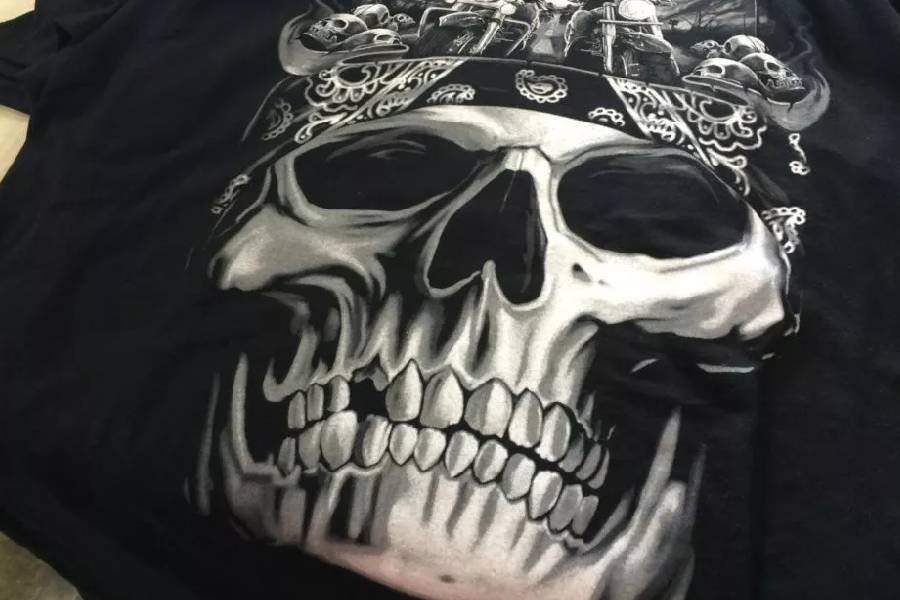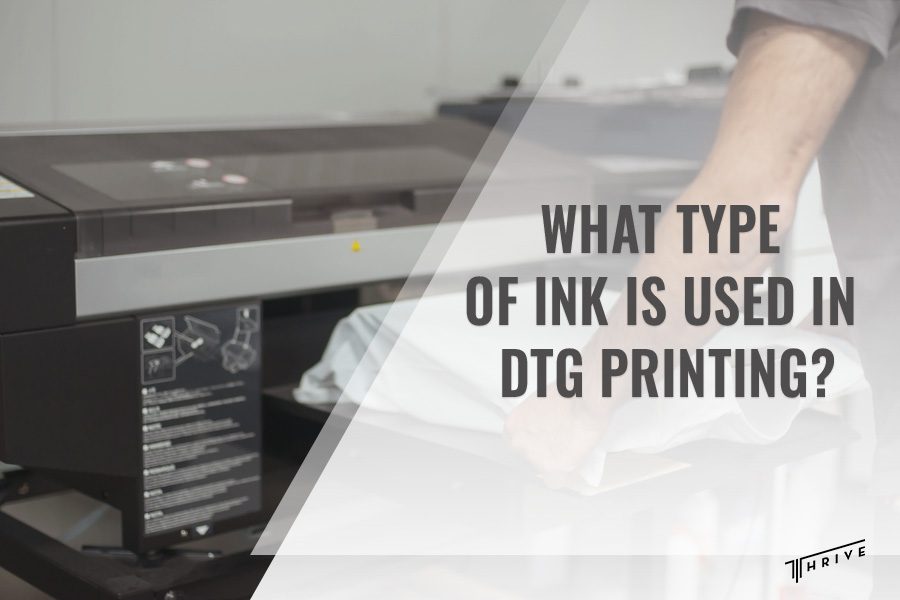DTG, or direct-to-garment printing, is a popular method of printing designs onto textiles. This printing technique uses inkjet technology to transfer ink directly onto the fabric, producing high-quality prints. The type of ink in DTG printing is fundamental to achieving the desired result. That is why we will explain what type of ink is used in DTG printing.
What Type of Ink Is Used in DTG Printing?
As the best DTG contract printing service, we offer direct-to-garment printing and want to explain the types of digital textile pigment inks. Direct-to-garment printers usually have a platen, designed to keep the garment in a fixed position. The printer ink is sprayed or jetted onto the fabric. Sometimes, the DTG requires the costume to be pre-treated with PTM (pre-treatment machine) to create a stronger bond between the clothing fibers and the inks.
DTG printers require aqueous textile inks. Since these inks are water-based, they are best for printing on cotton, bamboo, linen, and hemp, basically most natural fibers. As we mentioned before, pre-treatment is usually applied to the piece of clothing, which involves heat-pressing into the custom T-shirt. The water-based inks connect better with the garments.
We use several other types of digital textile pigment inks for DTG printing besides water-based pigment inks. These include reactive inks, acid inks, and sublimation inks. Each type has unique characteristics, and it is suitable for different fabric materials and printing processes.

Water-based pigment inks
For DTG printing, we mostly use water-based pigment inks, as we mainly print on T-shirts. Water-based inks use water as the primary solvent for the pigment they carry. They are made of acrylic raisins or mixtures of acrylic resin and polyurethanes. Water-based inks penetrate the textile deeply and provide a soft print because they are made of soft resins and water.
These inks are popular and attractive because they can create detailed and vibrant prints without damaging the fabric’s softness and comfort. Moreover, water-based inks give excellent color accuracy and saturation, making them ideal for printing complex designs with small details.
These inks are also eco-friendly and do not contain harmful substances like heavy metals or volatile organic compounds (VOCs). Therefore, they are safe to use and do not pose any health risks to us, the printer operators, or clients.
Reactive inks
Reactive inks can also be used for DTG printing. Although created for conventional printing, we can also use them for DTG. They are mainly used for printing on natural fibers, like cotton. But we can use them for printing on viscose, wool, and silk.
These inks contain dyes that chemically react with the fabric to create a permanent bond, leading to durable prints. When fabrics are steamed, the chemical reaction ensures that the color molecules connect to the fiber.
Reactive inks are known for their excellent color reproduction, perfect for printing complex, colorful designs. Yet, reactive inks need longer post-processing, like washing and steaming, to fix the dye onto the fabric permanently. Yet, their biggest benefit is that reactive inks have high wash fastness, meaning that clothes can be washed many times without losing the print.
Acid inks
Acid inks are high-quality inks used by the high-end fashion industry for the printing of delicate silks, soft cashmere, and swimwear.
These inks contain acid-based dyes that react with the fibers to create a durable and vibrant print. Acid inks provide excellent color fastness and are resistant to fading or washing out, making them ideal for garments that require frequent washing, like swimwear made of lycra and nylon. Acid inks offer high color brilliance and tolerance for chlorine and salt water.
Sublimation inks
Sublimation inks are commonly used for printing on polyester fabrics. These inks have a unique property, which allows them to transfer the dye directly onto the fabrics under heat and pressure.
Sublimation inks offer vibrant and durable prints, resistant to washing out, cracking, and fading. They are also known for their ability to create prints with great color accuracy. Remember that sublimation inks are not suitable for natural fibers as they require materials like polyester for the dye to bond properly.
When choosing the best DTG ink for a specific fabric type, it is important to consider factors like compatibility with the inkjet printer, durability, and accuracy. Plus, the CMYK color model (cyan, magenta, yellow, and key/black) is used in DTG printing because it allows us to create many color variations by mixing only the primary colors.
Remember that we always work with high-quality inks and ensure high-quality shirt and apparel printing using advanced DTG printers.

Conclusion
So, knowing what type of ink is used in DTG printing definitely helps understand the whole process. Although we mostly need water-based colors when we work with DTG printers, we use several other inks based on the fabric we print on. These inks include reactive inks, acid inks, and sublimation inks.
Water-based inks are best for natural fibers; reactive inks work on different fabrics; acid inks are suitable for silks, cashmere, and swimwear; and sublimation inks are suitable for polyester.

Robert Fisher is the founder and CEO of Thrive Screen Printing and brings extensive experience in the screen printing and fulfillment industry.


